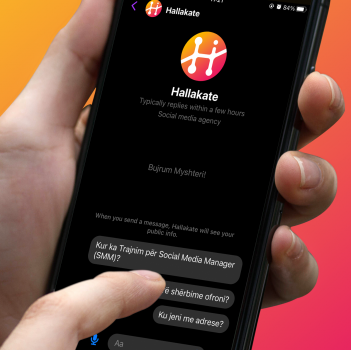

Social media engagement is similar to interaction in real life. You don’t maintain good relationships or get to know new people, just so that you can get famous. Receiving audience response and growth is not about fame either. Increasing in audience and engagement does not only grow your businesses popularity. It is much more than that. A consistent interaction between a business and its audience builds trust with current customers and grows the current audience. So not only does it turn customers into loyal or long-term customers, but it also increases the audience from which you can convert into customers. However, in order for the interaction to take place, the audience must respond to the content you post online.
We hope you are convinced of how important audience engagement is for your social media page. If so, then you are probably interested to know how to make this engagement happen. To understand how to stimulate audience response on social networks that leads to engagement, read this article all the way to the end!
What is an audience response?
Digital marketing is adding new terminology daily. This is due to the many inventions and updates happening in the industry. So let us explain what we mean when we say “response” in this context.
In social media, response is the action that the audience takes towards your business site. Among others, the main ones are comments, likes and shares.
How to increase audience response?
Initially, social audience or engagement is done organically. So what motivates an audience to react to a content? Guess, we’re waiting…
1 …
2 …
3 …
Did you guess the content itself? If so, then you were right. It’s a no-brainer that the very first thing that gets an audience to respond is posting interesting content. This is another article in itself. Stay tuned and we might post that one as well!
Well, maybe you already created your content and want to go from here. In that case, you need other ways to increase your audience response. And luckily we have 7 of them!
We are sharing with you 7 almost unheard about tricks to get feedback from your audience. Although unusual, these methods are scientifically proven.
1. Time
Always be aware of time. Post content that is tied to a time related landmark. For example, post at the beginning of the week, the end of the year, or national and international holidays. People connect their actions and decisions in relations to time and events that accompany it. For example, at the beginning of the year many people seek change, or start something new. Think new year’s resolutions! This is a good opportunity to suggest them a change or a new action to take. Let’s apply this to blog posting. In this case, we could say something like: “Now that the weekend is here, you have the time to read!”.
2. Justice
It has been proven that people have strong reactions to something they perceive as unfair. We can give them a space for them to raise their voice by making them aware of issues that are unjust. If you run a non-governmental organization for volunteering, you can word your content this way: “Even in the post-corona times, our children have lost their sense of extracurricular activities. Does the situation have to change?”.
3. Effort
This method is mostly used to market professionalism and increase confidence in the business. Talk about how long it took and you may have had to build what you built. Or in how many countries does the business or the impact of your initiative extend. If you offer textile products, you can say: “Our products are handmade and detailed by over 50 diligent workers from 5 suburbs of Kosovo.” It shows clients or audiences all the work you have done “behind the scenes”. And that, in fact, without the market no one knew. And what you do not know, do not appreciate!
4. Rhyme
Try it if you dare! Rhyming content is a tricky method to use and you should be very meticulous with it. So use with caution! When you have a slogan, whether for a brand, campaign, ad, or post, that you really believe in, then go for it! Studies show that people are more likely to believe that something that rhymes is true.
5. Choice
People want to make their own choices and decisions. Instead of one option, give them a couple! This is advisable for several reasons. An offered option (product or service) makes the audience think “Do I wanna buy it?”. Whereas, multiple options make the audience think “Which one do I buy?”. This change is a significant turnaround in sales. On the one hand it changes the mind from debating to making a decision. So, a “yes” or “no” turns it into “yes, which one?”. The client, in addition to having the freedom of choice is given the opportunity to decide.
6. Discount
We all know that discounts attract customers. But the way you do it, seems to make a difference. According to studies, grouping products in kits is one of the best ways. This is because the customer gets the spending hit only once for a couple of products. Let’s go even deeper into this. It is suggested that when giving discounts, give the most pleasurable product in the kit for free. Let’s take the example of binders and chocolate. If you give a free chocolate to a bundle of binders, you will have more sales than vice versa.
7. Label
If you call someone “a buyer”, they will be more likely to act upon the name. People want to be consistent. By using labels that people want to have, you can provoke more positive responses from them. If you have a business that offers training, you can say: “If you are good at learning new things, join our training!”.
How does audience response work?
These 7 secrets that we shared with you are proven by social and behavioral studies. Science tells us that people do not act rationally most of the time. They rather act according to habit and influences they are not always aware of. Many of these habits are already known to science and can be used in marketing. So, audience response creates engagement. Consequently, social media engagement brings the customer closer to the business.









